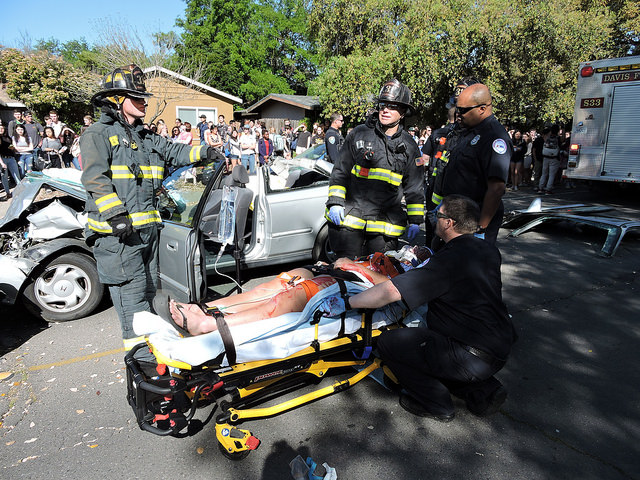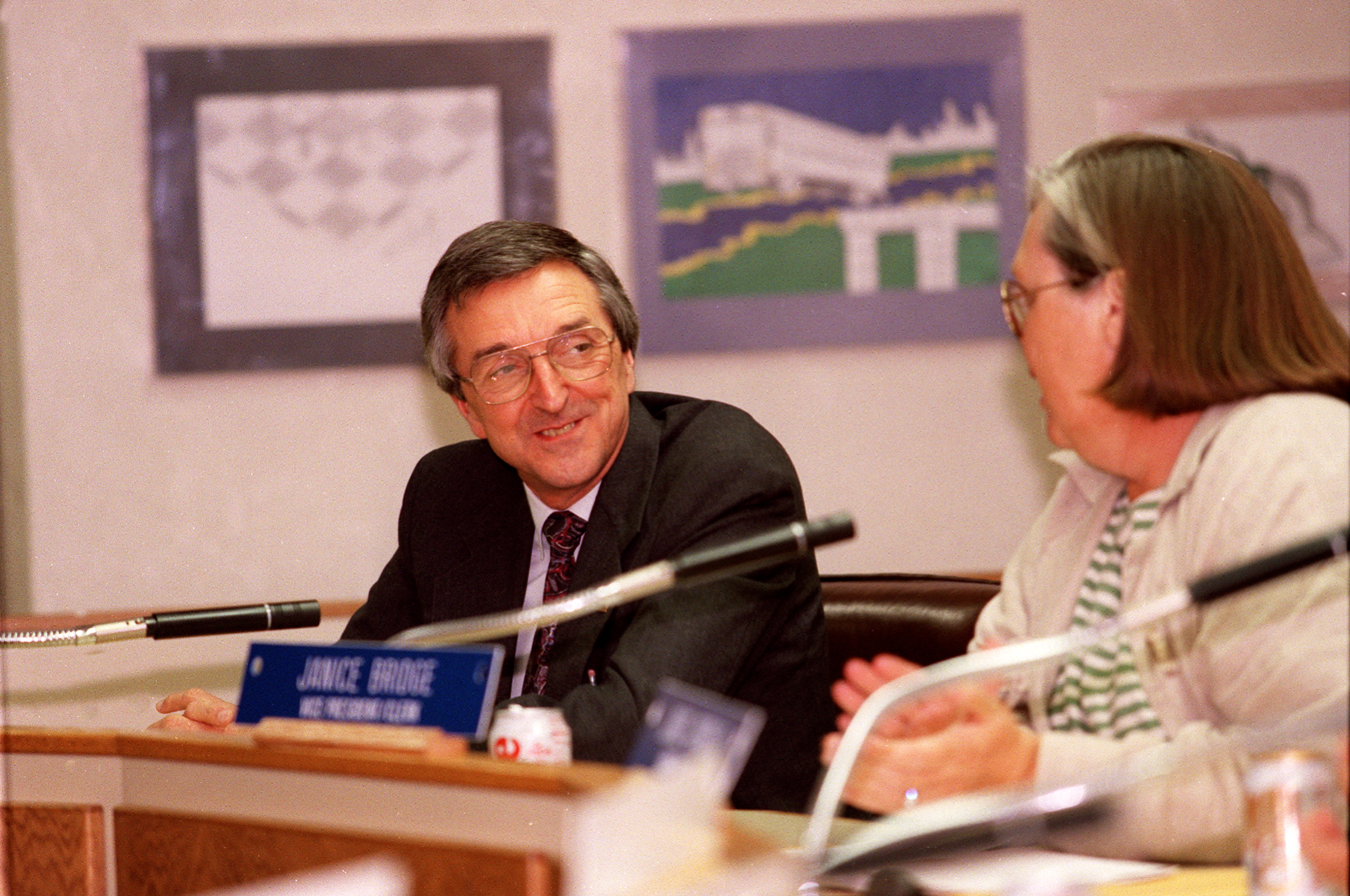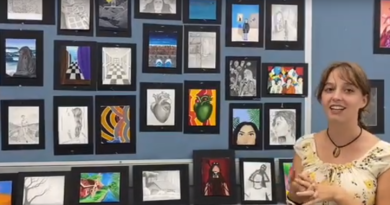“Every 15 Minutes” stages drunk driving accident to raise awareness

By Meghan Bobrowsky and Denna Changizi,
BlueDevilHUB.com Staff–
Davis High staff directed students to Oak Avenue before third period Tuesday, April 5, where a fatal car crash awaited them.
What students saw was the aftermath of a head-on collision between two sedans, surrounded by police and fire trucks. After removing two bloody bodies from one of the cars, a helicopter landed onto the soccer field to transport the students to the hospital.
[pullquote]“We’re hoping to bring an awareness to the students that you have to really think twice about what you do, especially drinking.”~Richard Moore, Fire Station 31 captain[/pullquote]
As realistic as the scene looked, it was all a simulation designed to educate students about the dangers of driving under the influence.
Davis police officer John Wilson, often stationed on school campuses, says the program is named “Every 15 Minutes” because “when it was created, nationally someone died in the United States by a drunk driver every 15 minutes.”
“Every 15 Minutes” was first simulated at DHS in 1997, encouraged by a concerned community that was losing about one DHS student per year due to drunk driving.
“We’ve only lost one since ‘97 since we started doing this, so that’s why we keep doing it again,” Wilson said.
To make it as realistic as possible, firefighters, EMTs and police officers are told to treat the simulation as a real situation and follow their usual procedure.
Richard Moore, the captain at Fire Station 31 in Downtown Davis, said he was informed about the incident this morning.
“We’re hoping to bring an awareness to the students that you have to really think twice about what you do, especially drinking,” Moore said. “This is what we do; we didn’t have to practice or anything like that because this is what we normally do. We train on this all the time.”
This year, junior Abbey Fisk and senior Anna Belenis were selected to be the victims. Senior Connor Amesbury was chosen as the drunk driver.
All three students are currently unable to contact their peers; they are pretending to be in jail or dead. However, while leaving the crime scene, Amesbury–who expressed remorse for killing Belenis, his friend since preschool–was able to share a little about the process.
Earlier this month, Amesbury was called to a meeting during class and learned about “Every 15 Minutes.” Several weeks ago, he was informed that he had been chosen to be the drunk driver.
“I didn’t know what I was supposed to do going into it, so I had to wing it,” Amesbury said.
Student Government adviser and Activities Director Anthony Vasquez has been working on the simulation since the beginning of the school year. He, Wilson and previous DHS Activities Director Eric Morgan held meetings in the library to discuss what needed to be done and by whom.
“All of those volunteers [are] basically giving their time to be there because they don’t want to go to another real [accident]; they’re sick of going to an actual crash site. Maybe this will cut down on that,” Vasquez said.
Many students observing from the crowd were aware that the scene was planned or quickly figured it out, and spread the word among their friends. Though this may have made the scene less real for some, Vasquez believes that the simulation was still very successful.
[pullquote]”The simulation actively engages students with the realities of alcohol-related driving […] so that they will make healthy decisions about the use or presence of alcohol.”~Principal William Brown[/pullquote]
“I observed many extremes of students thinking it was real and needing to be told that it wasn’t because they were worried,” he said. “And then I know students who were also in [the crowd] that instantly posted something inappropriate.”
Vasquez said the students who were chuckling and taking the situation lightly will not be laughing for long.
“I think over the next few days, it’ll sink in as they see their classmates taken out, as they see that they can’t text them later, as they see speakers at tomorrow’s assembly that have lost sons and daughters that can speak from firsthand experience,” Vasquez said. “There were laughs this morning but there won’t be a single one tomorrow.”
Vasquez is referring to the second part of the simulation, described to DHS parents in an email from Principal William Brown.
“Students will be periodically pulled from class and will not return until the following day to illustrate the human loss to a community that results from such a collision,” Brown said in the email.
Brown also informed parents about the program’s message.
“The simulation actively engages students with the realities of alcohol-related driving and requires them to use their critical thinking to evaluate the unannounced scene in front of them, so that they will make healthy decisions about the use or presence of alcohol,” he said.




